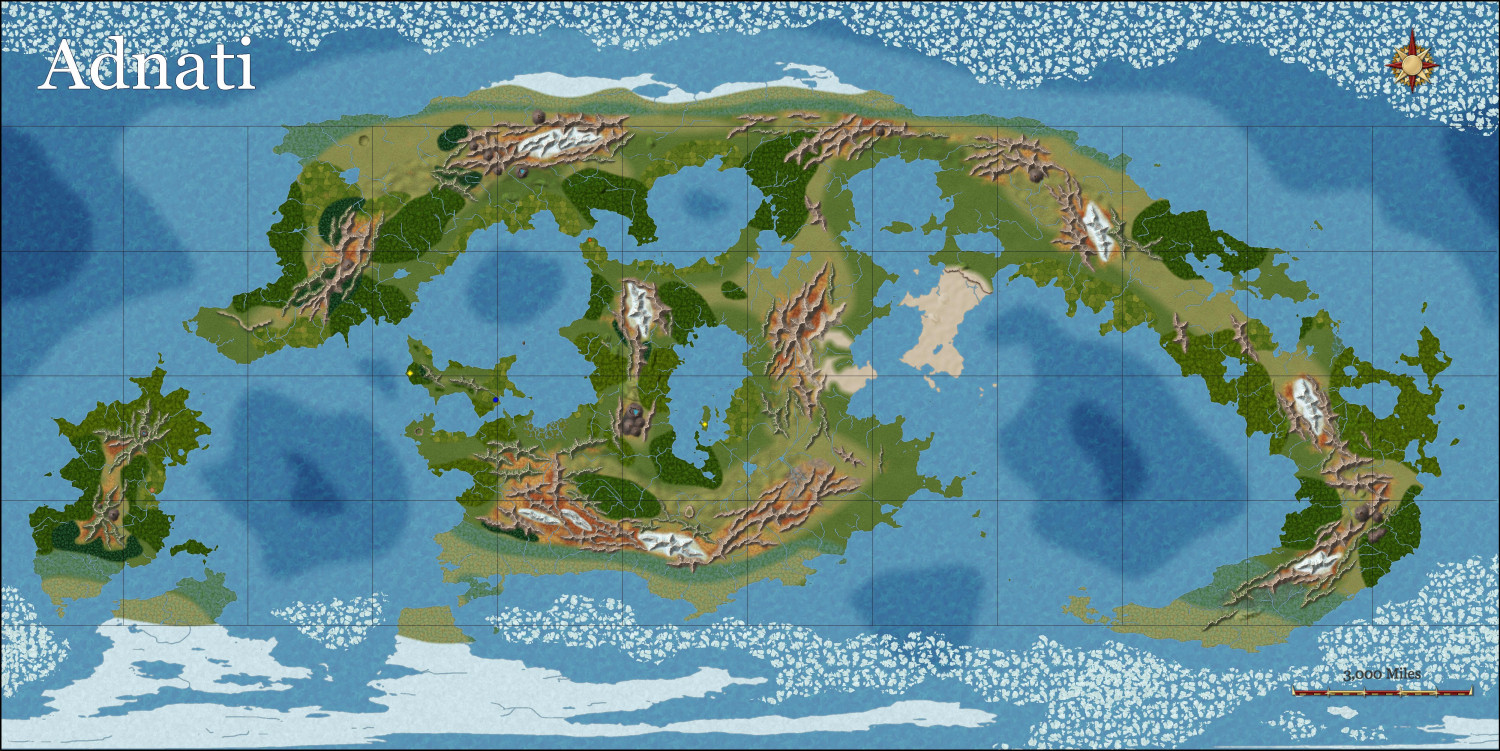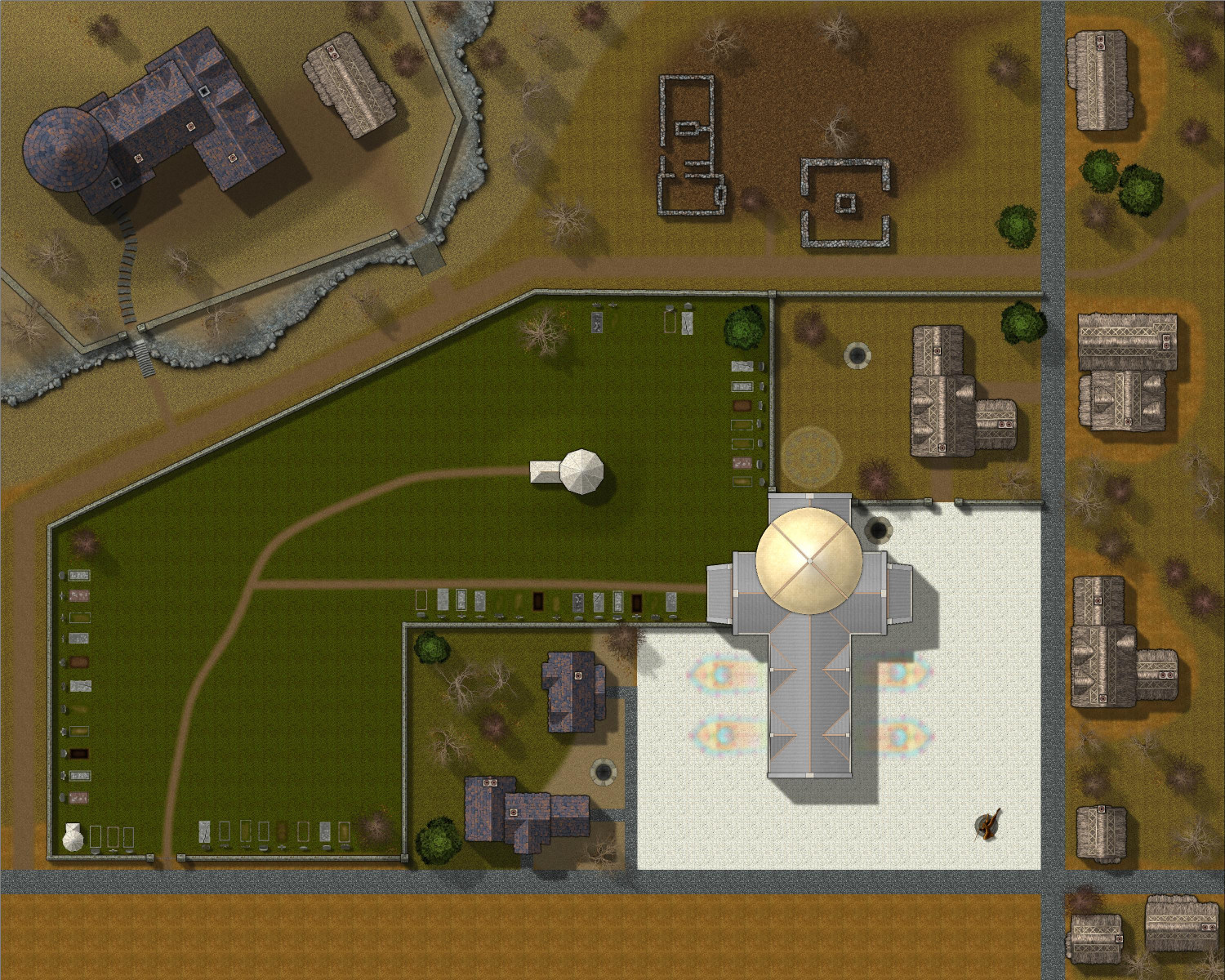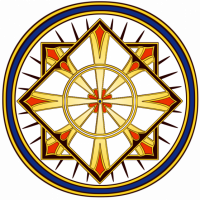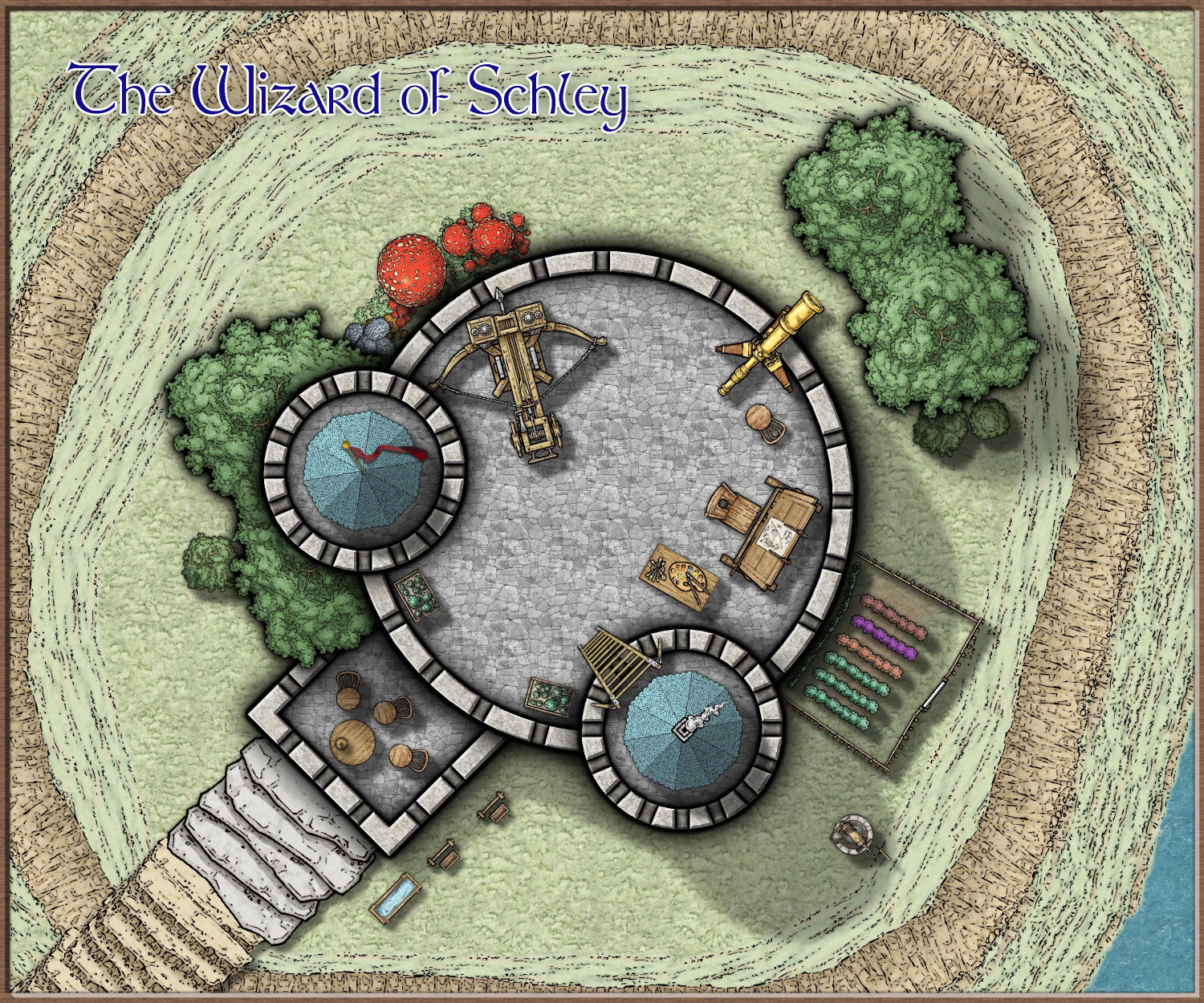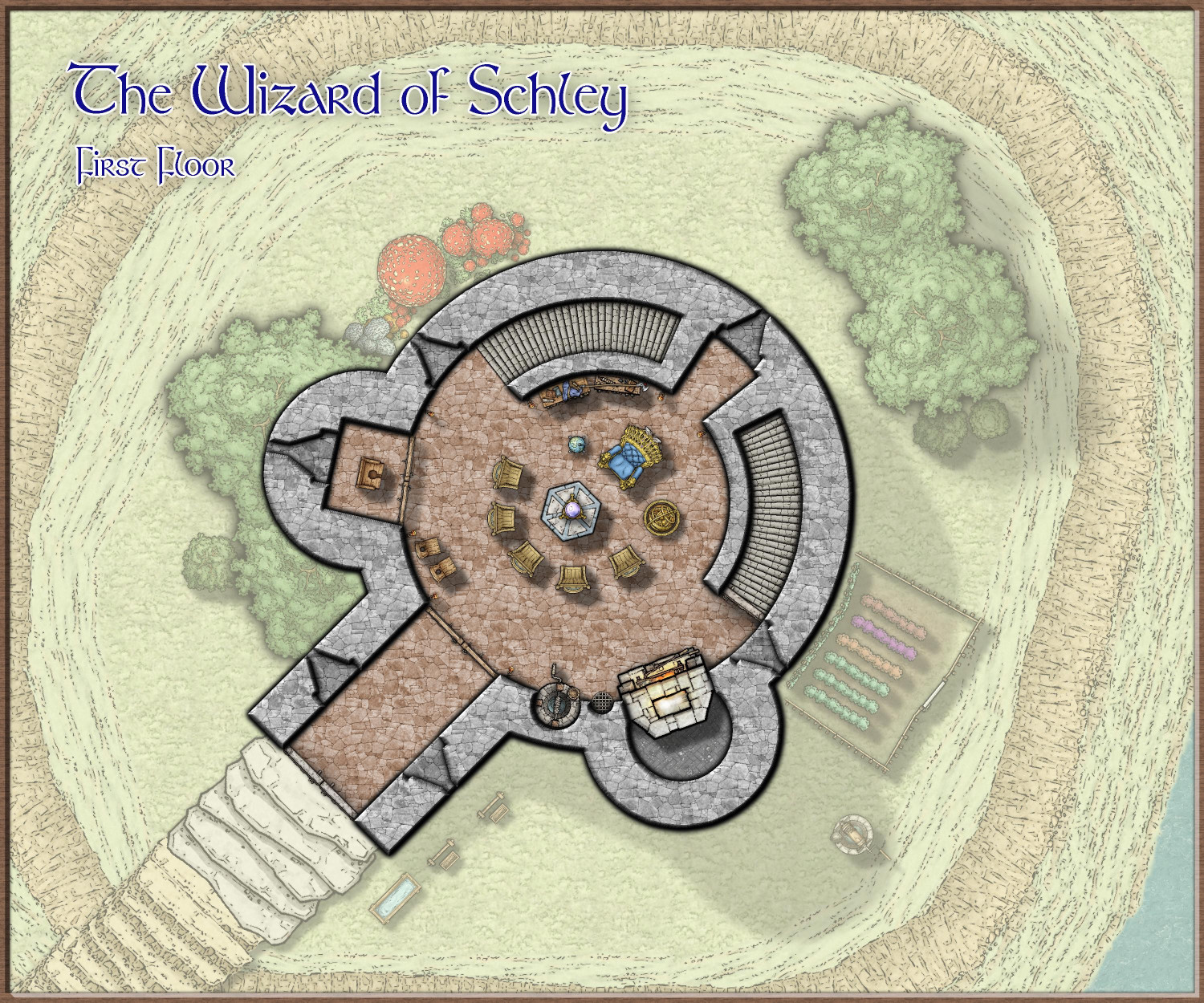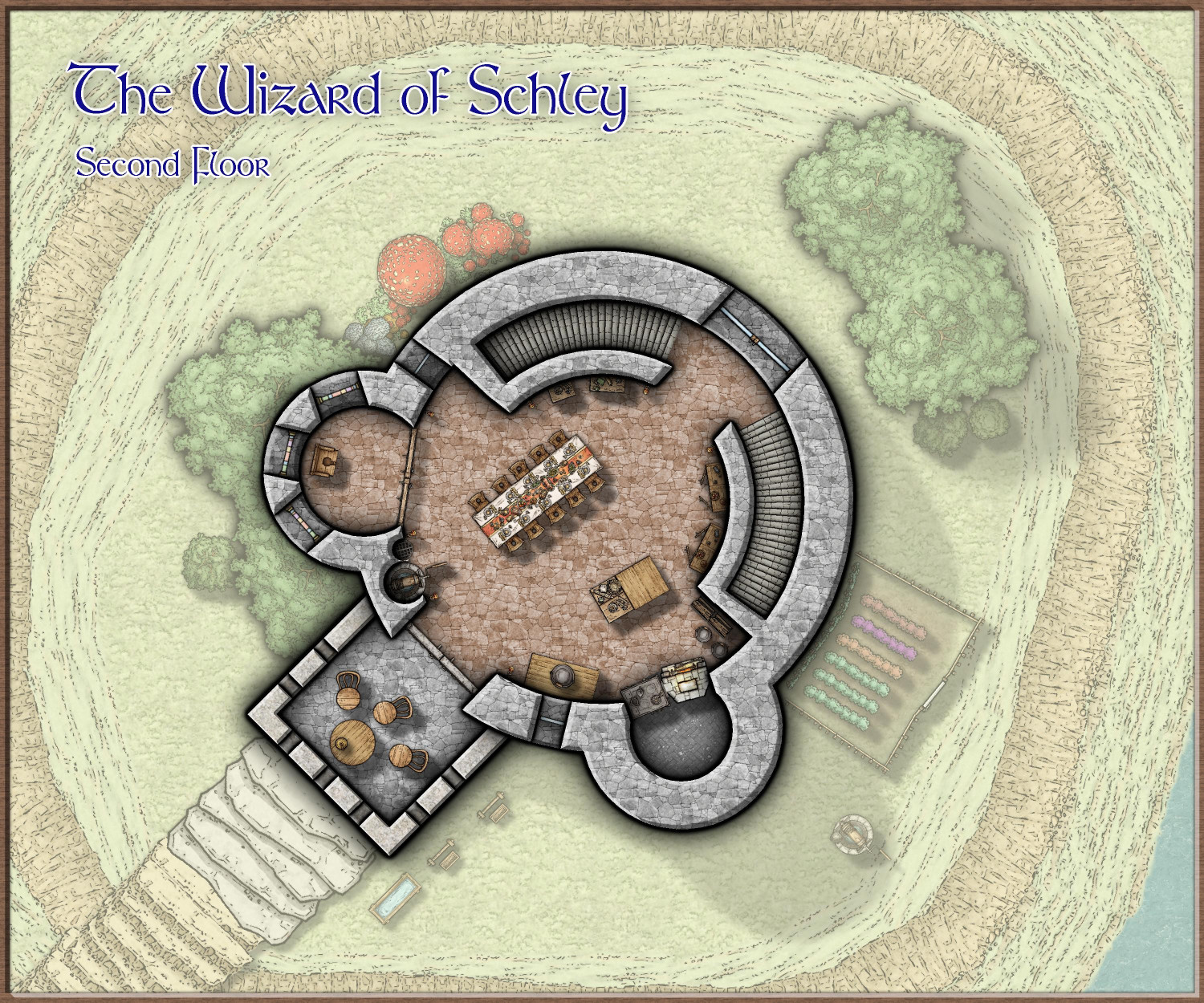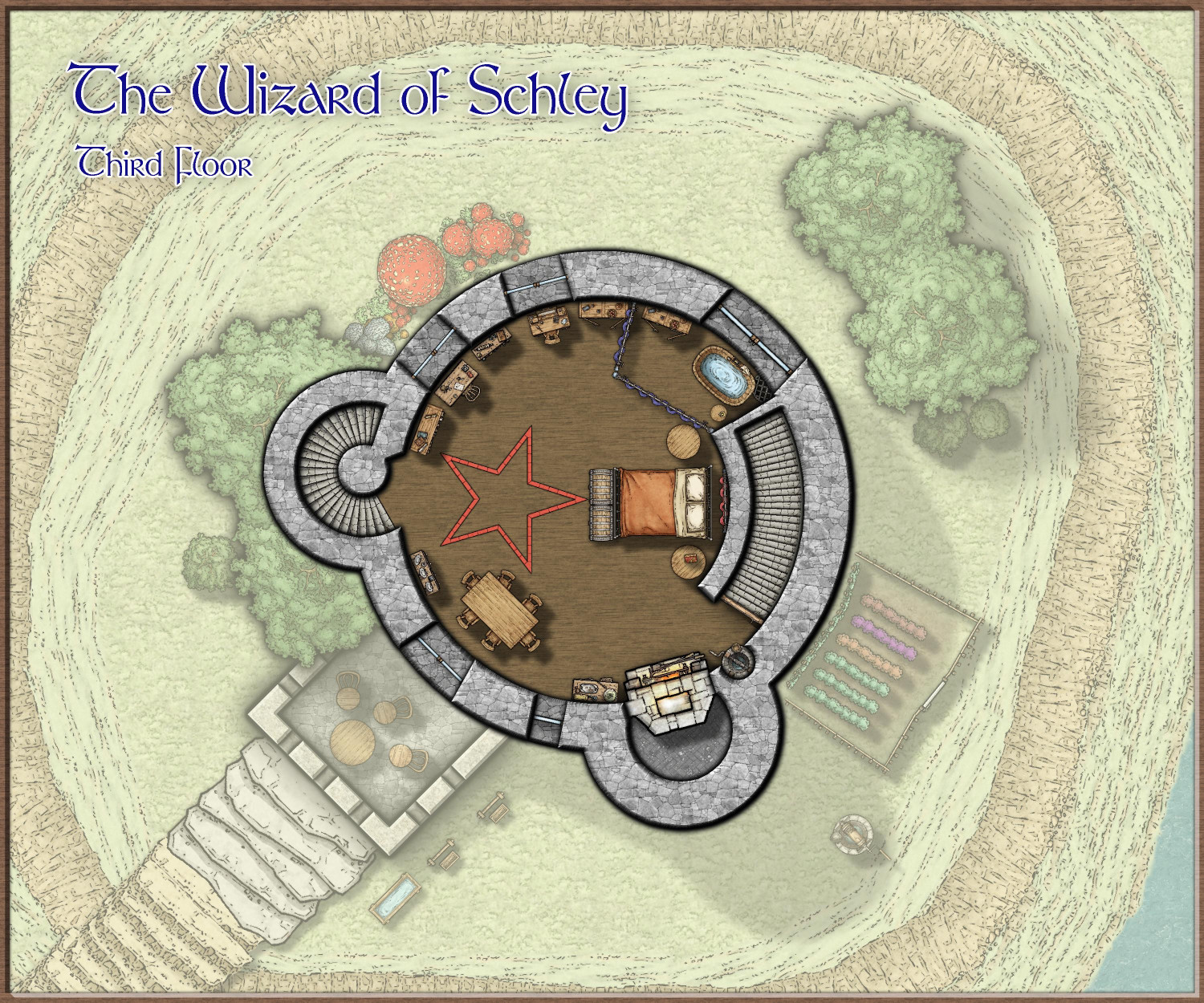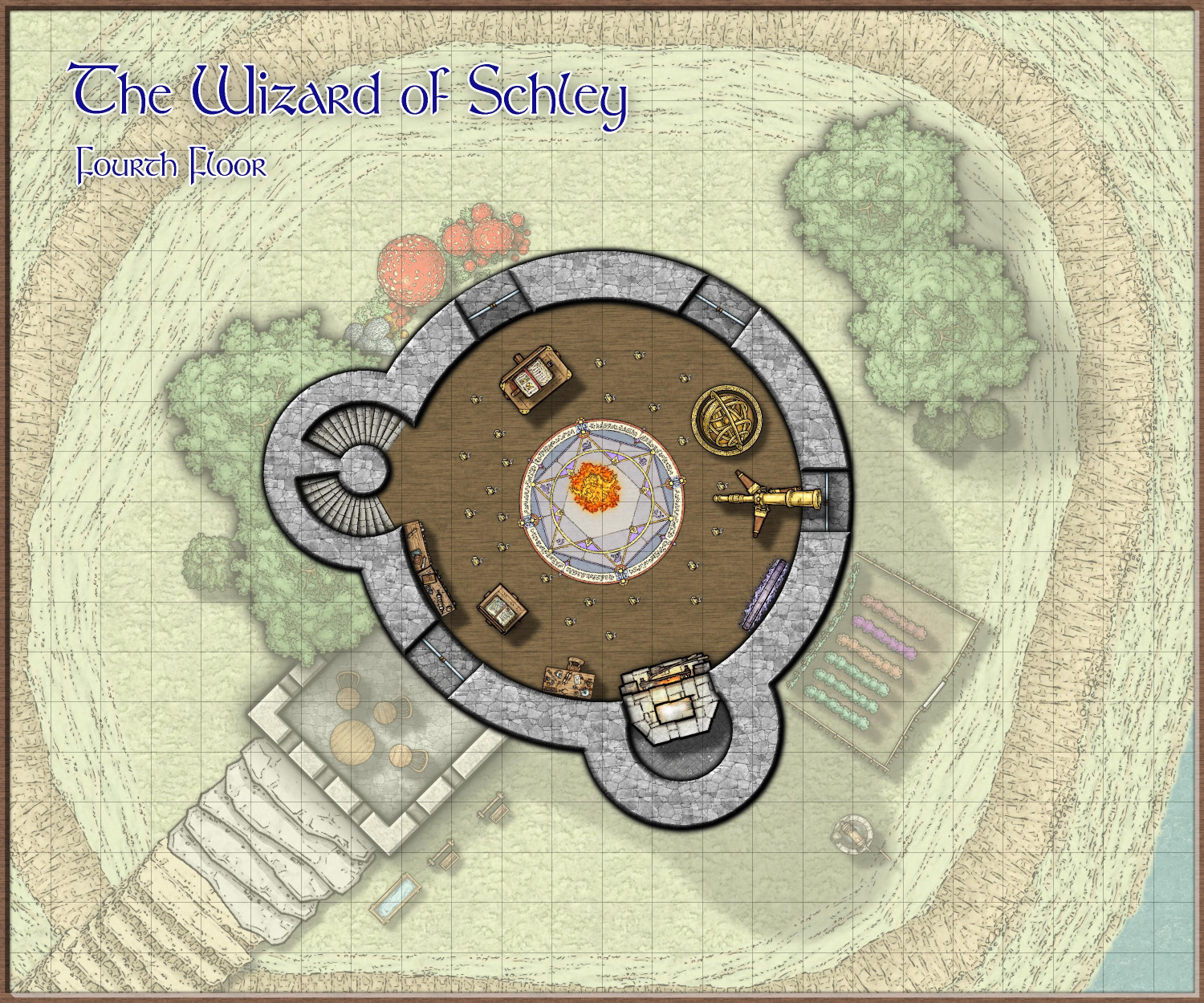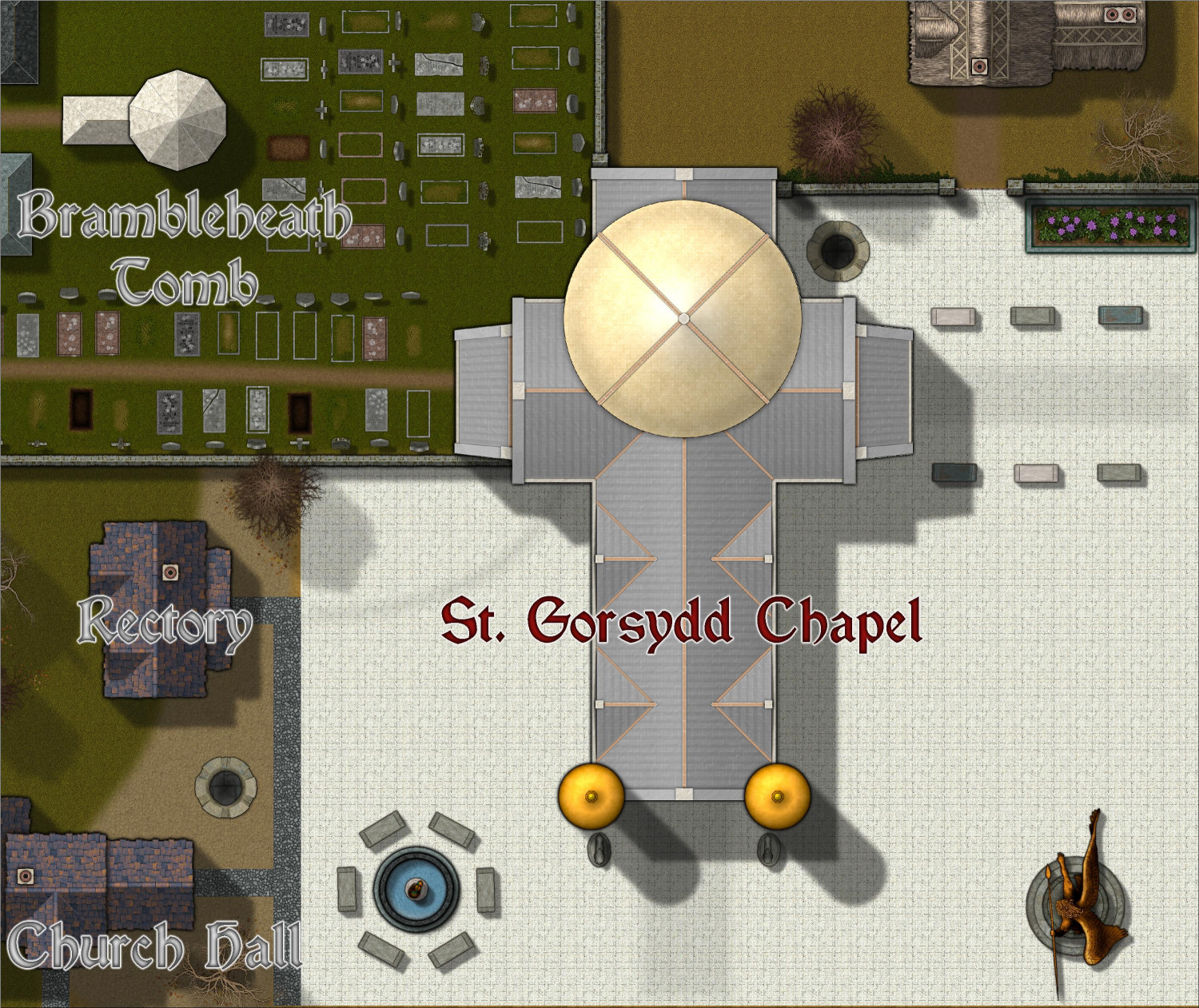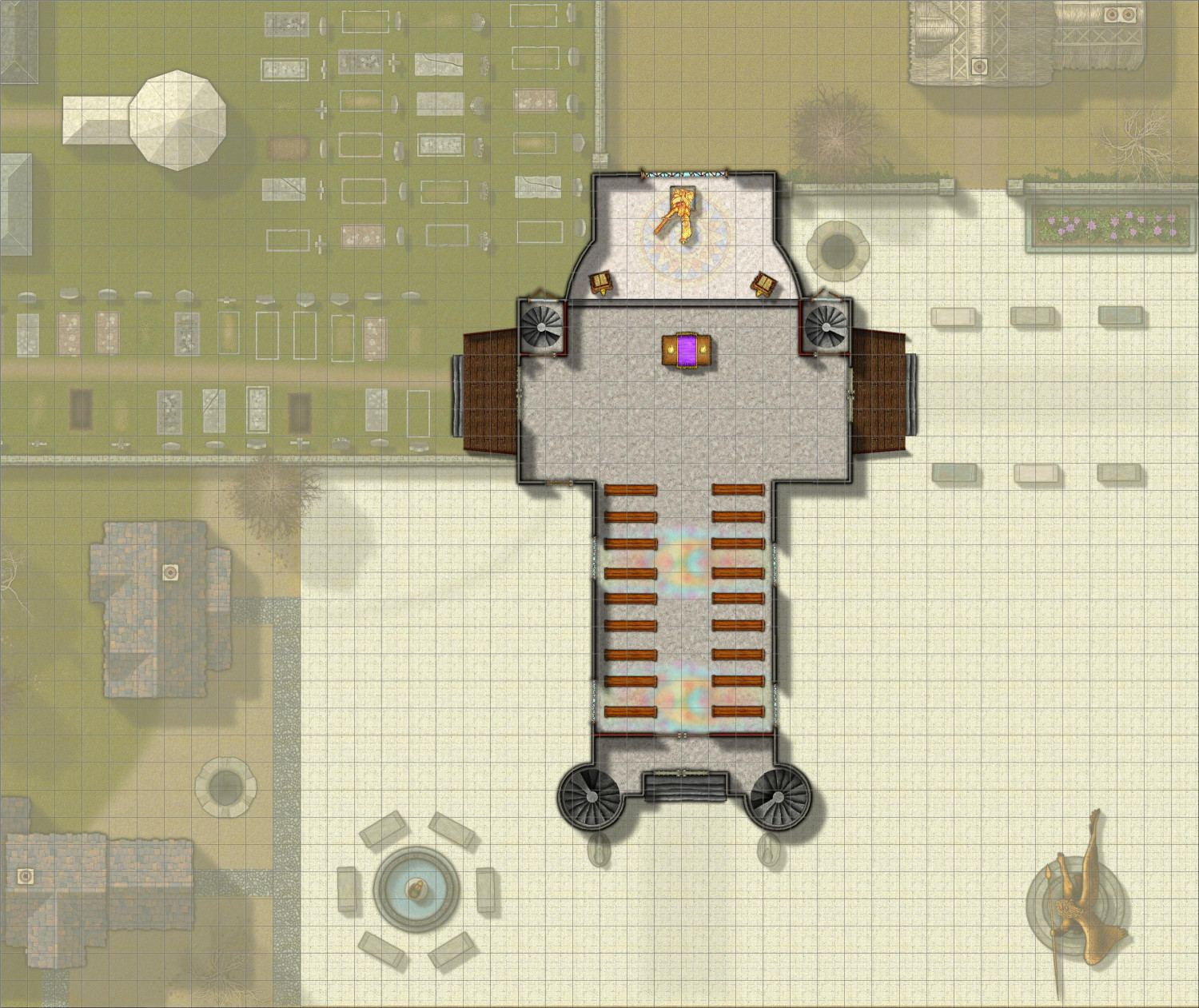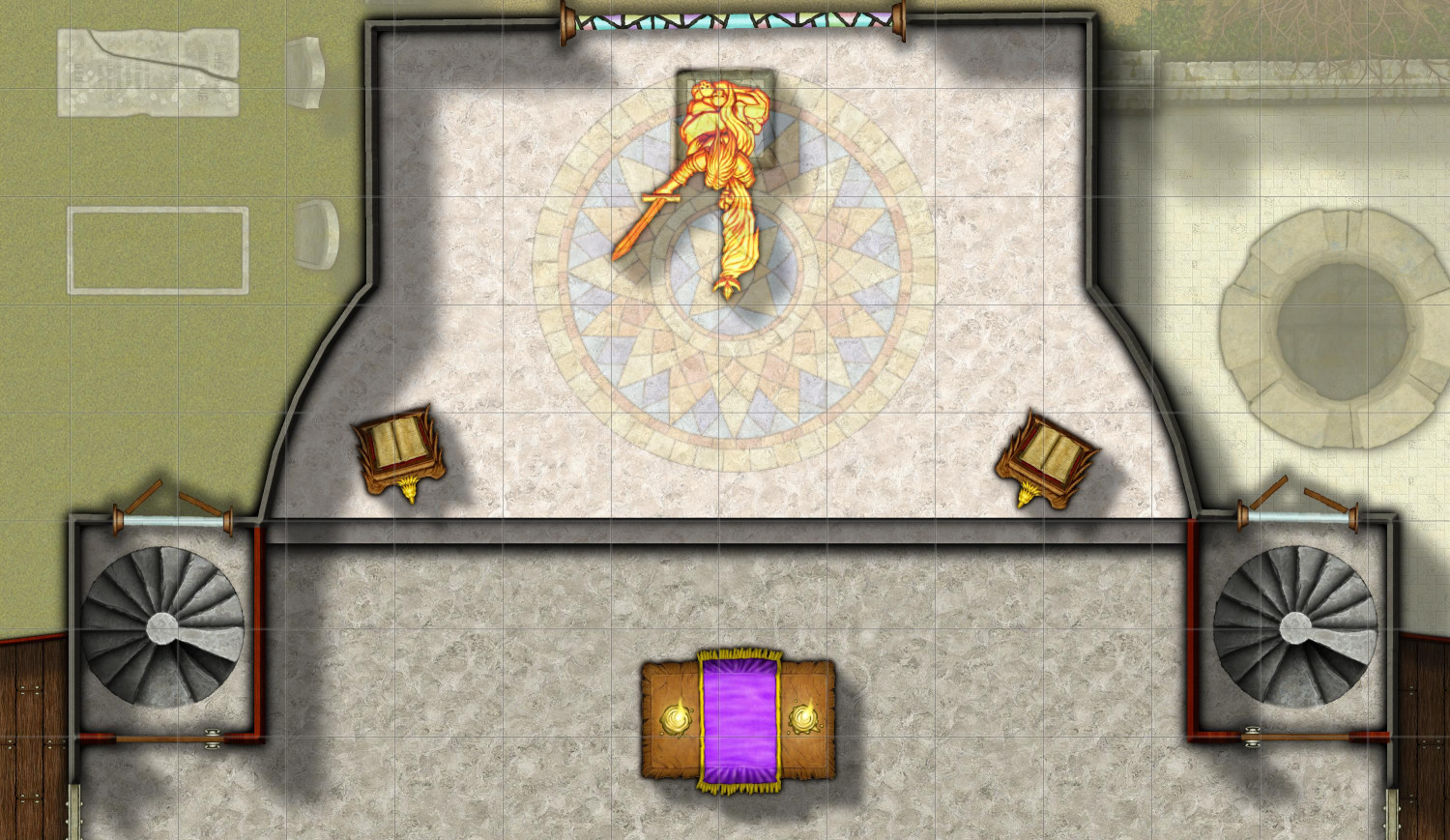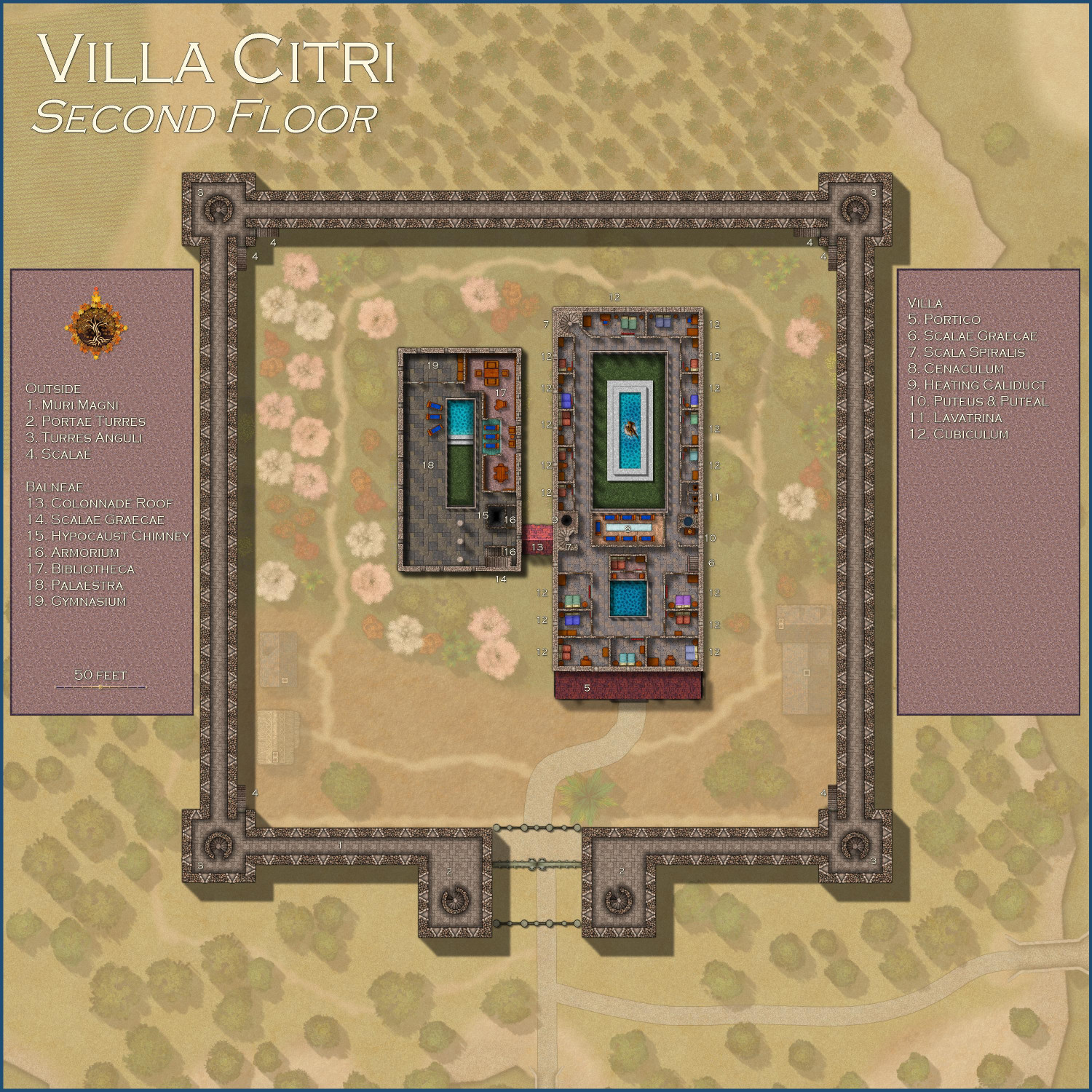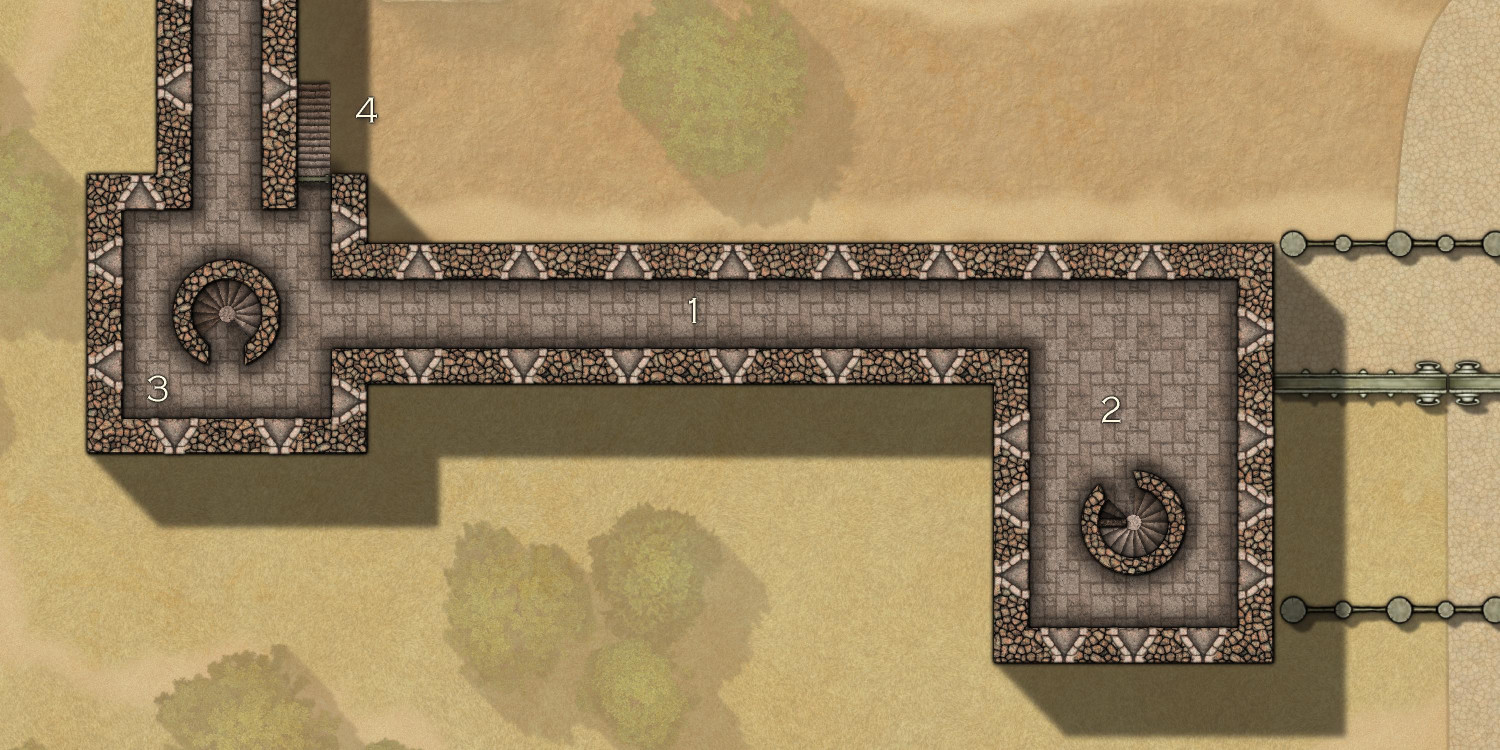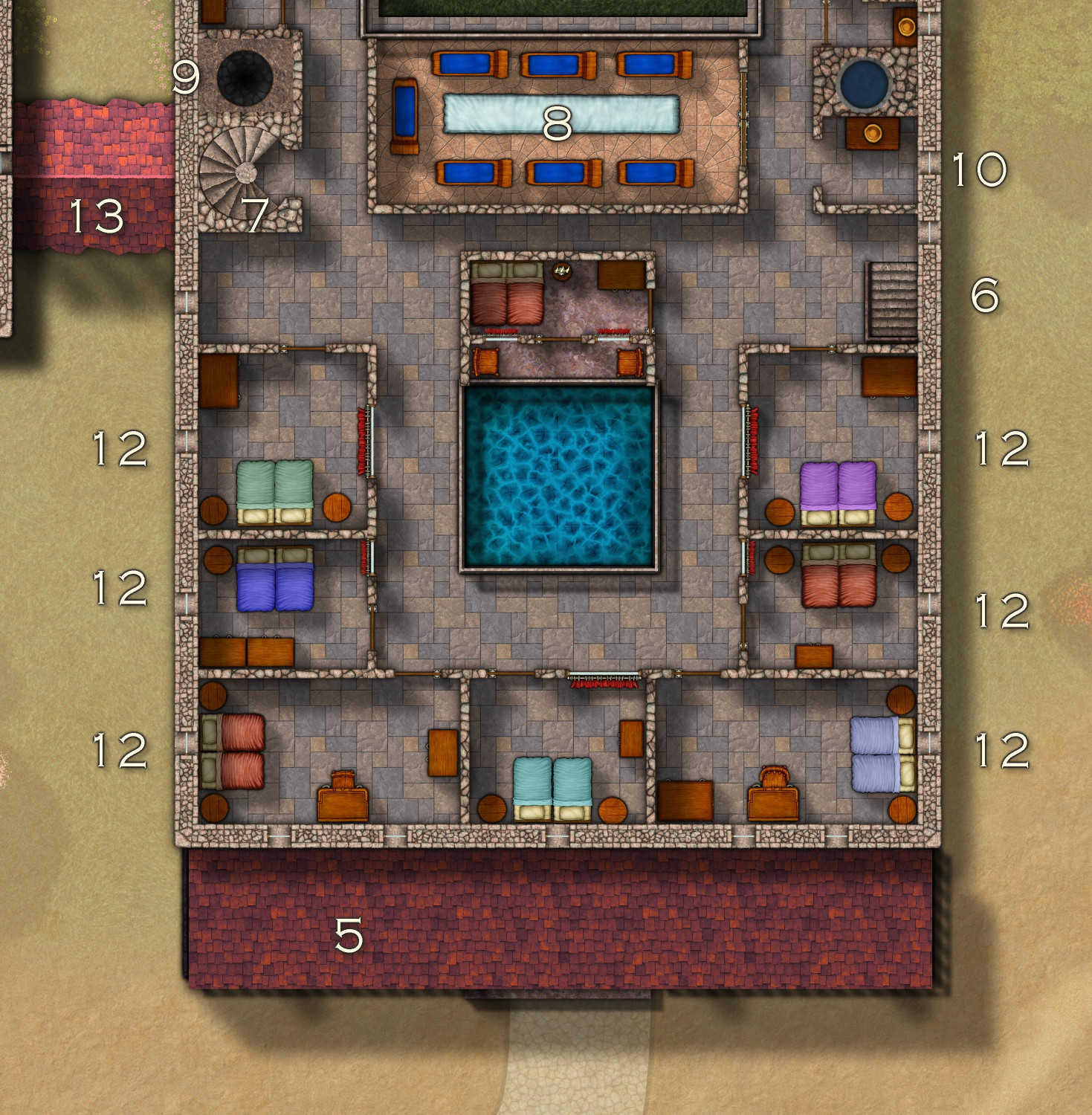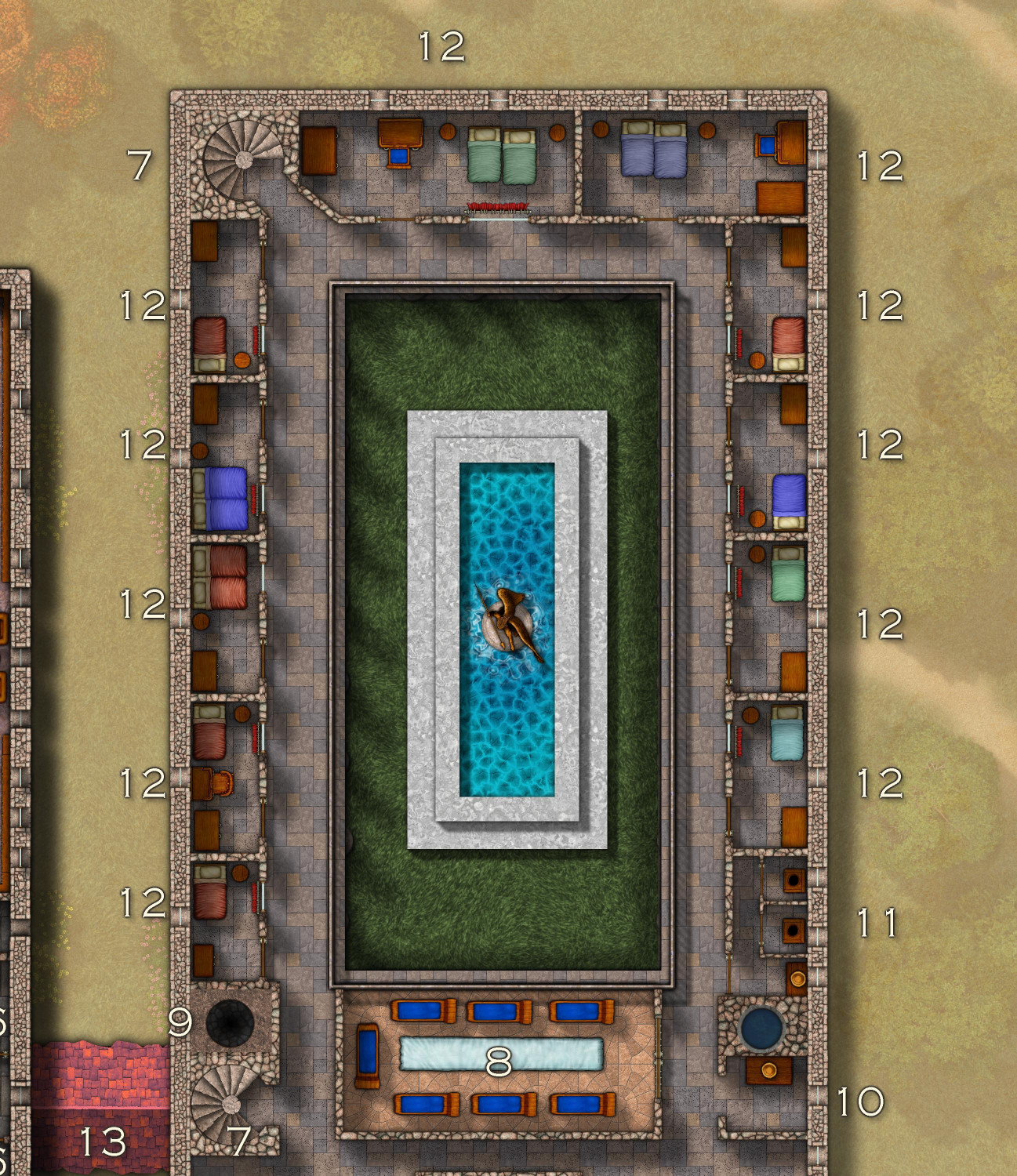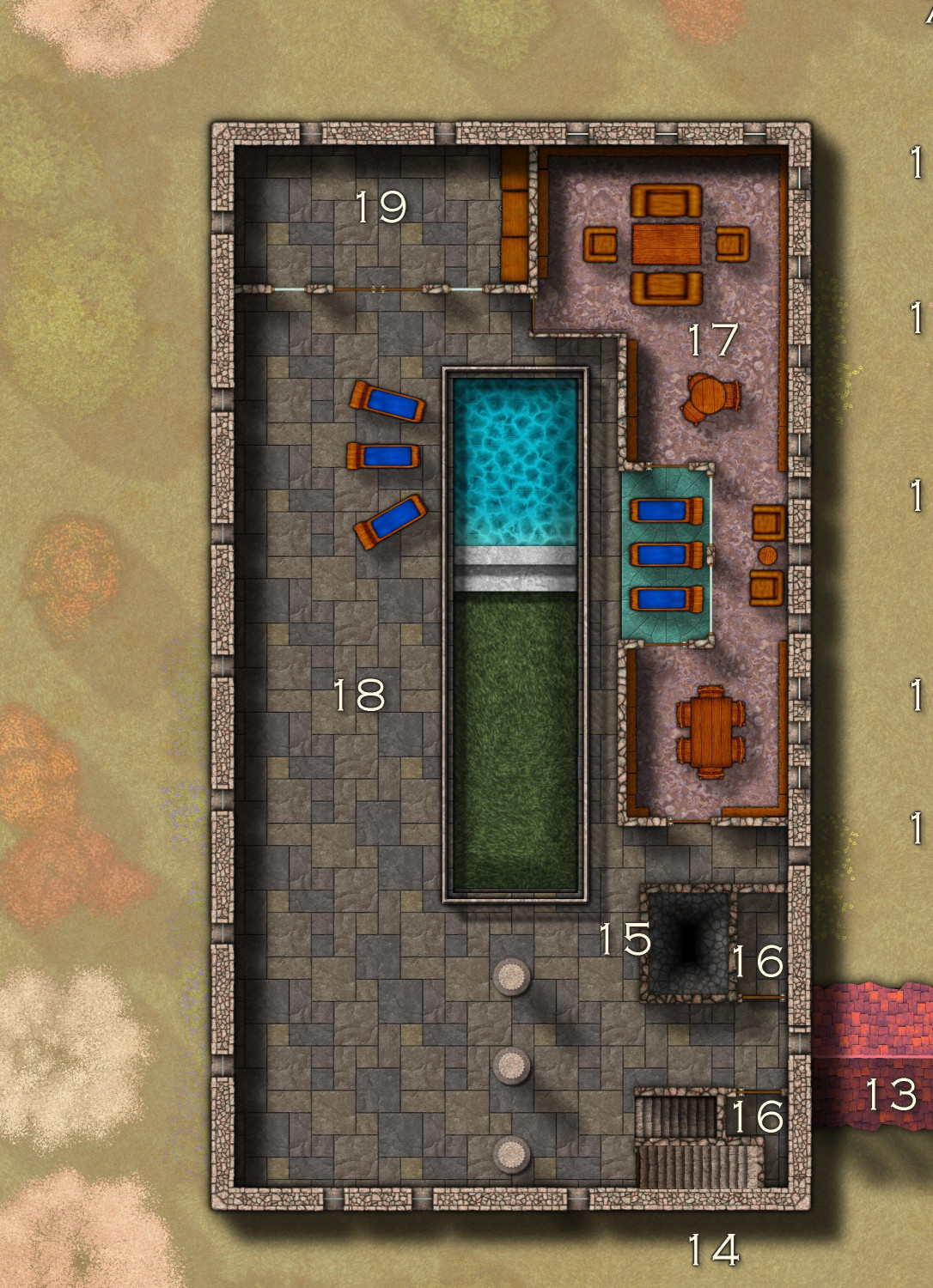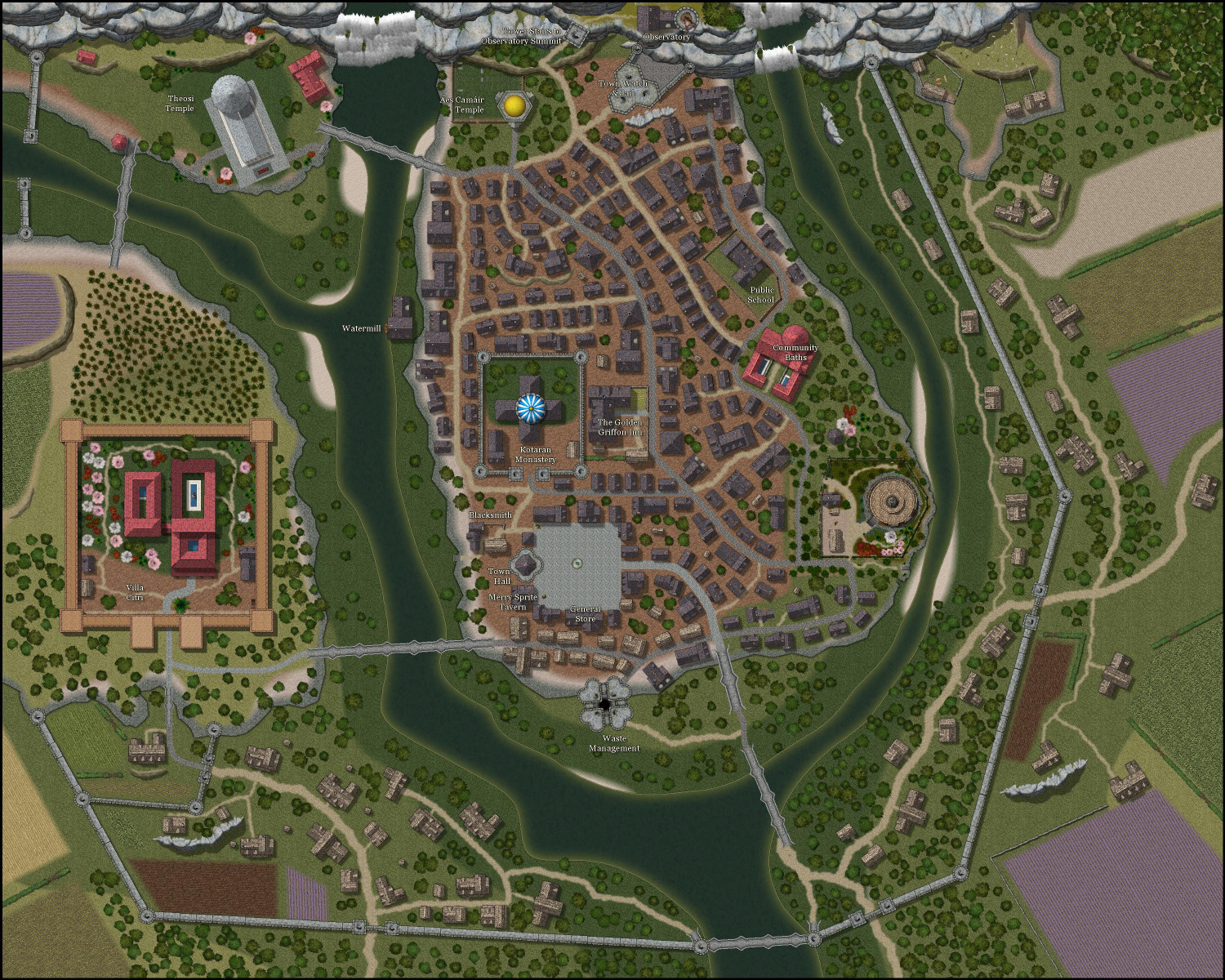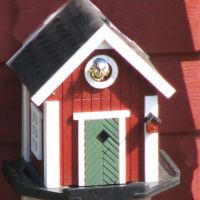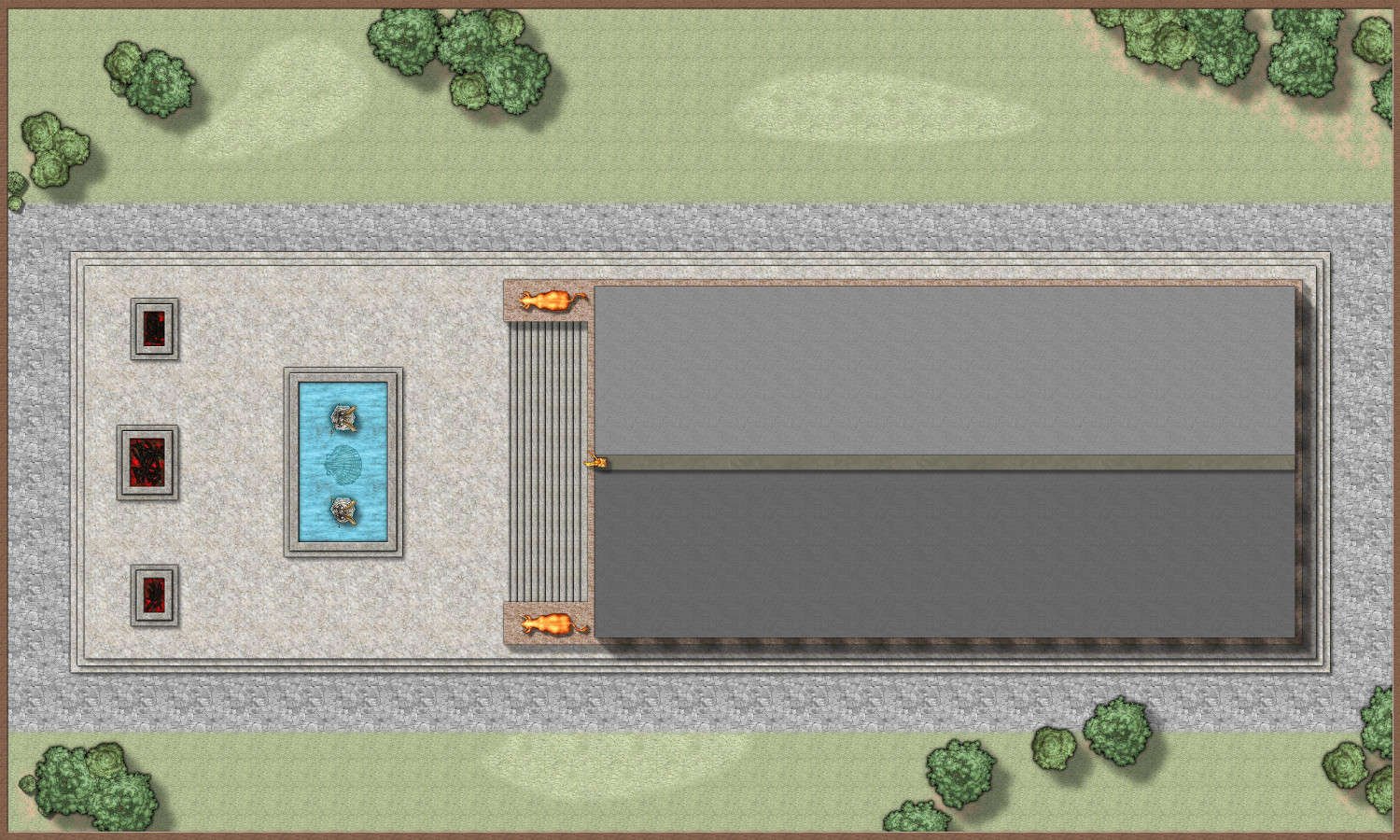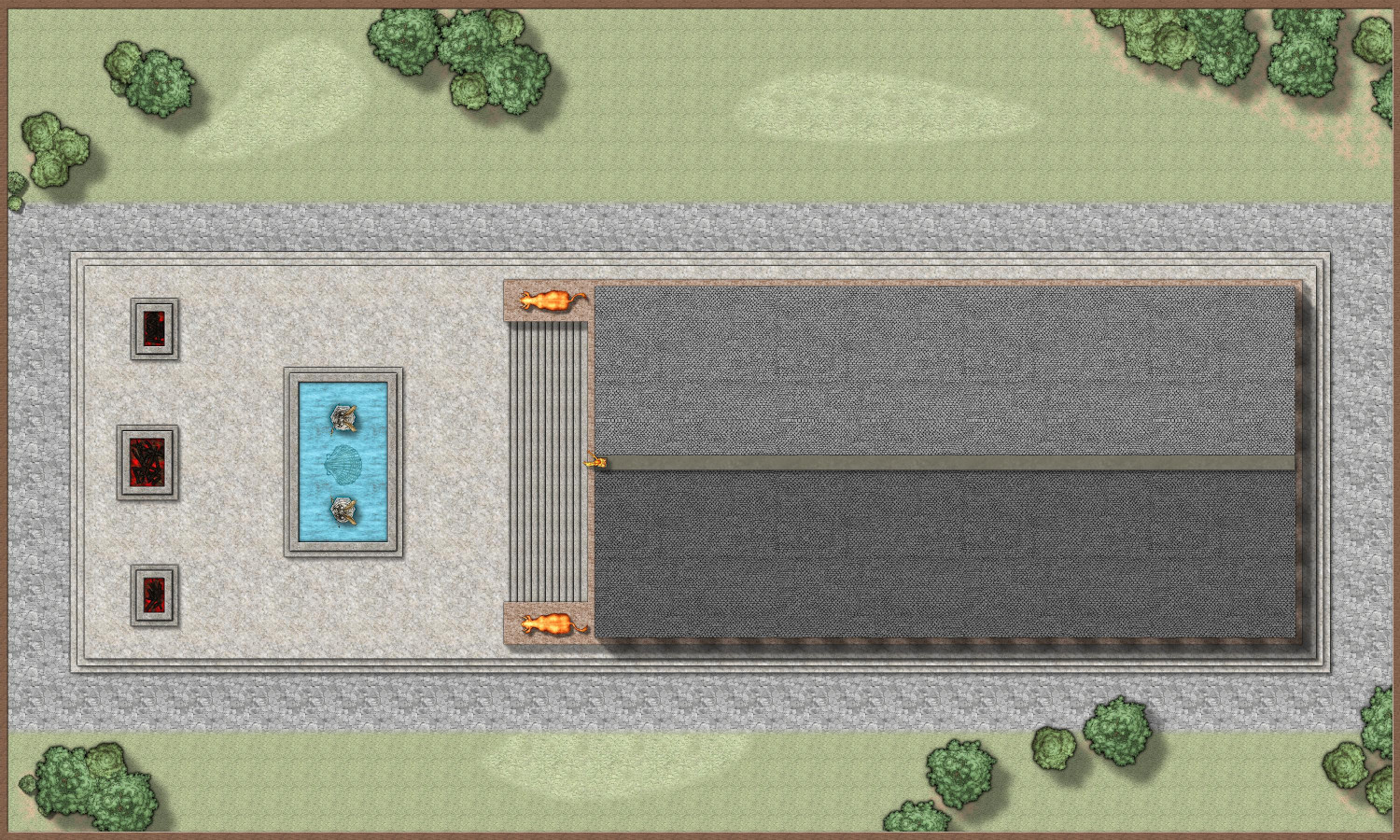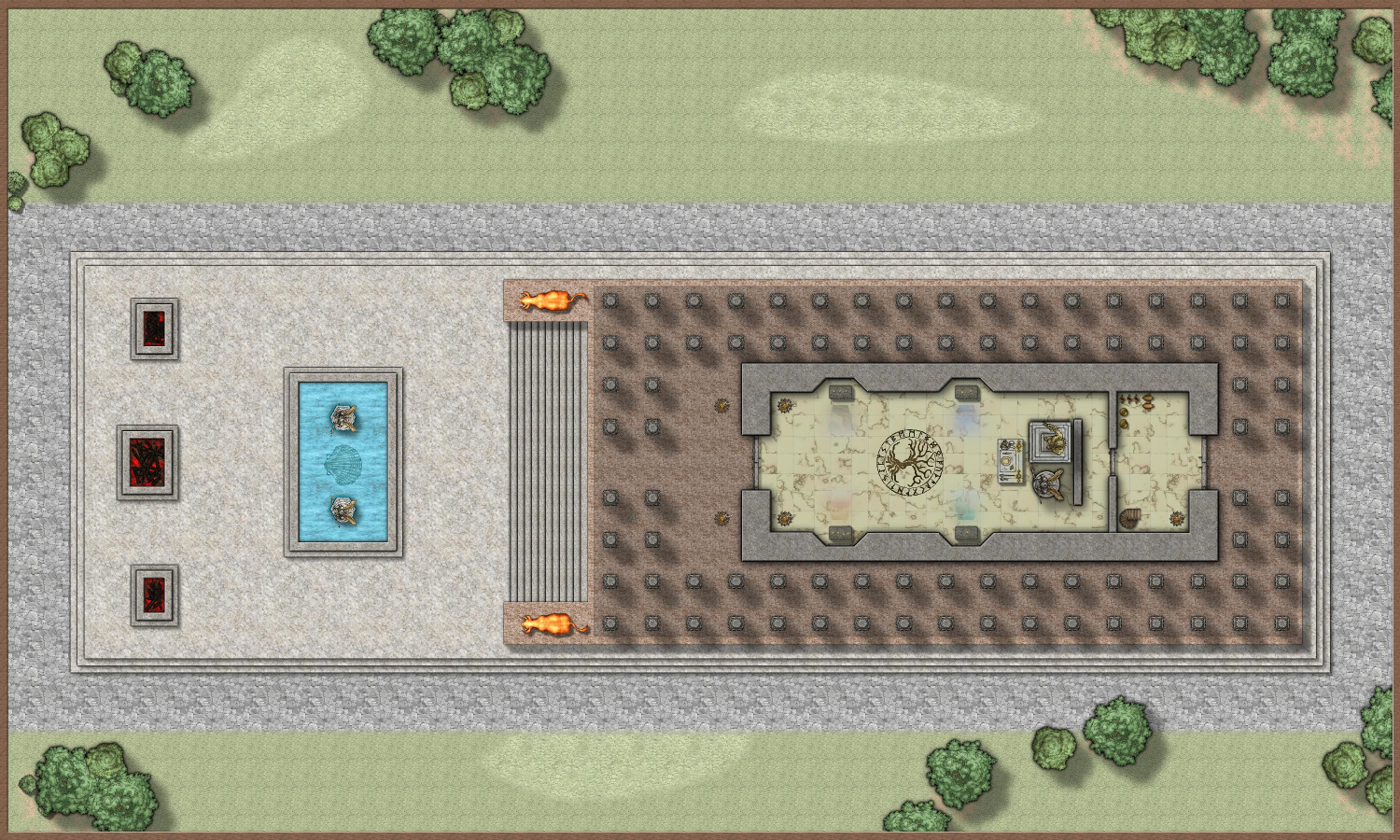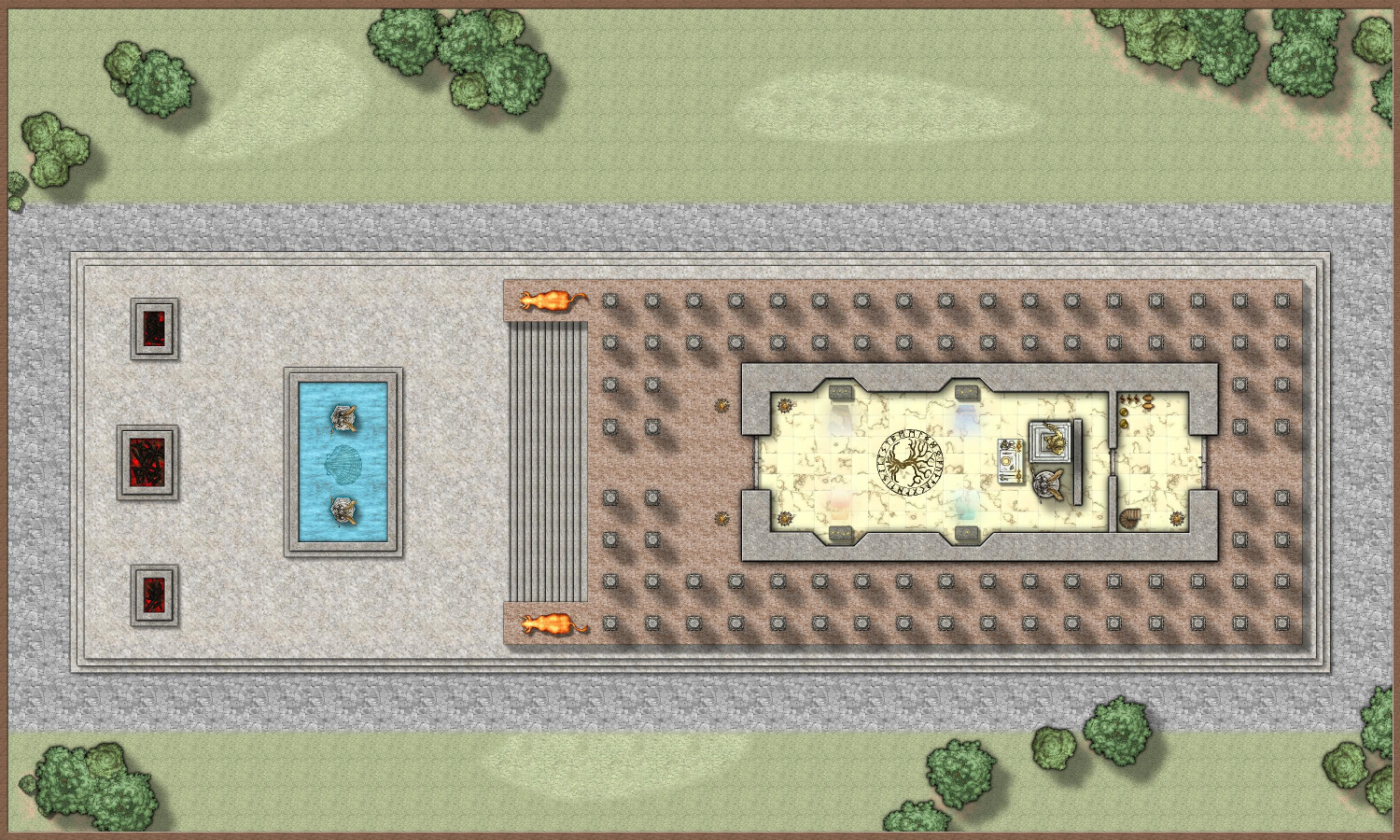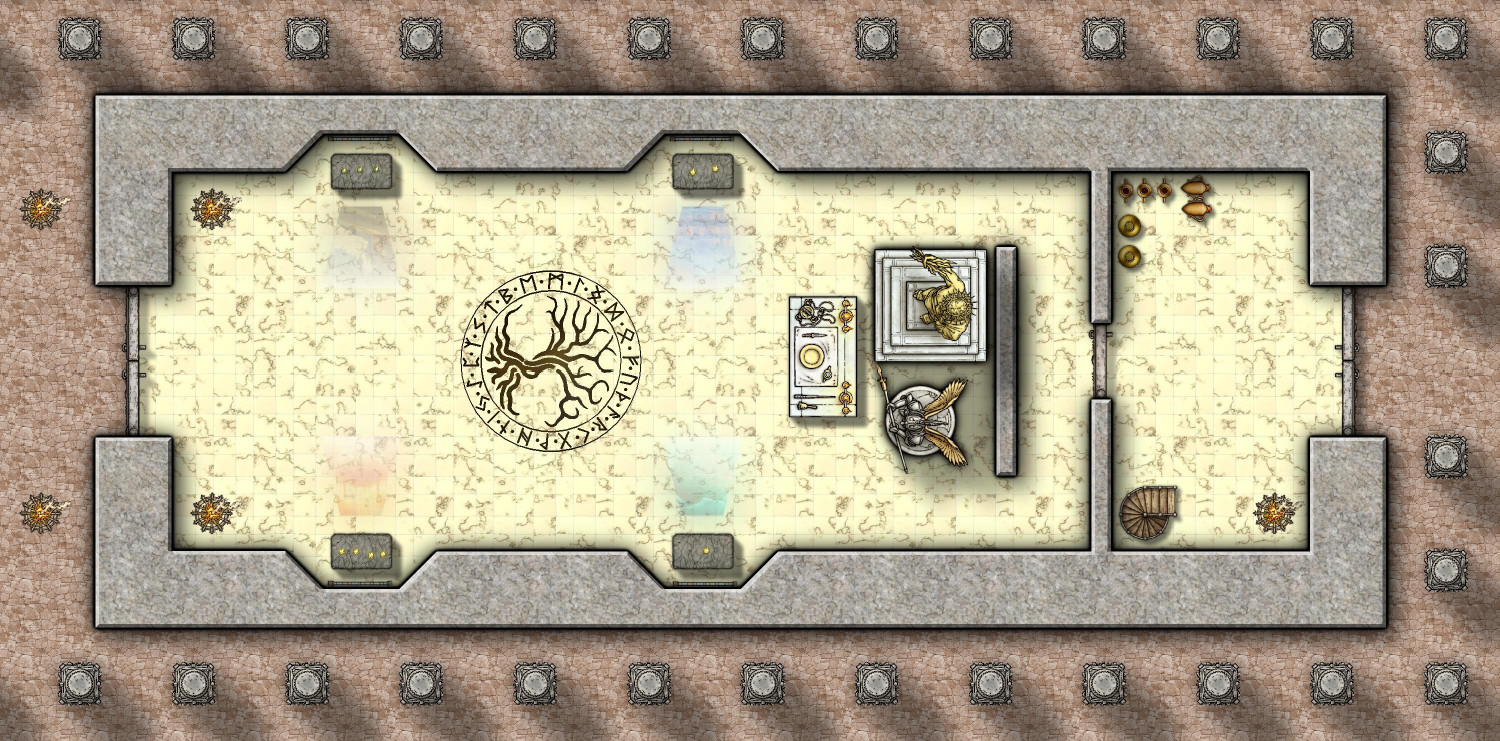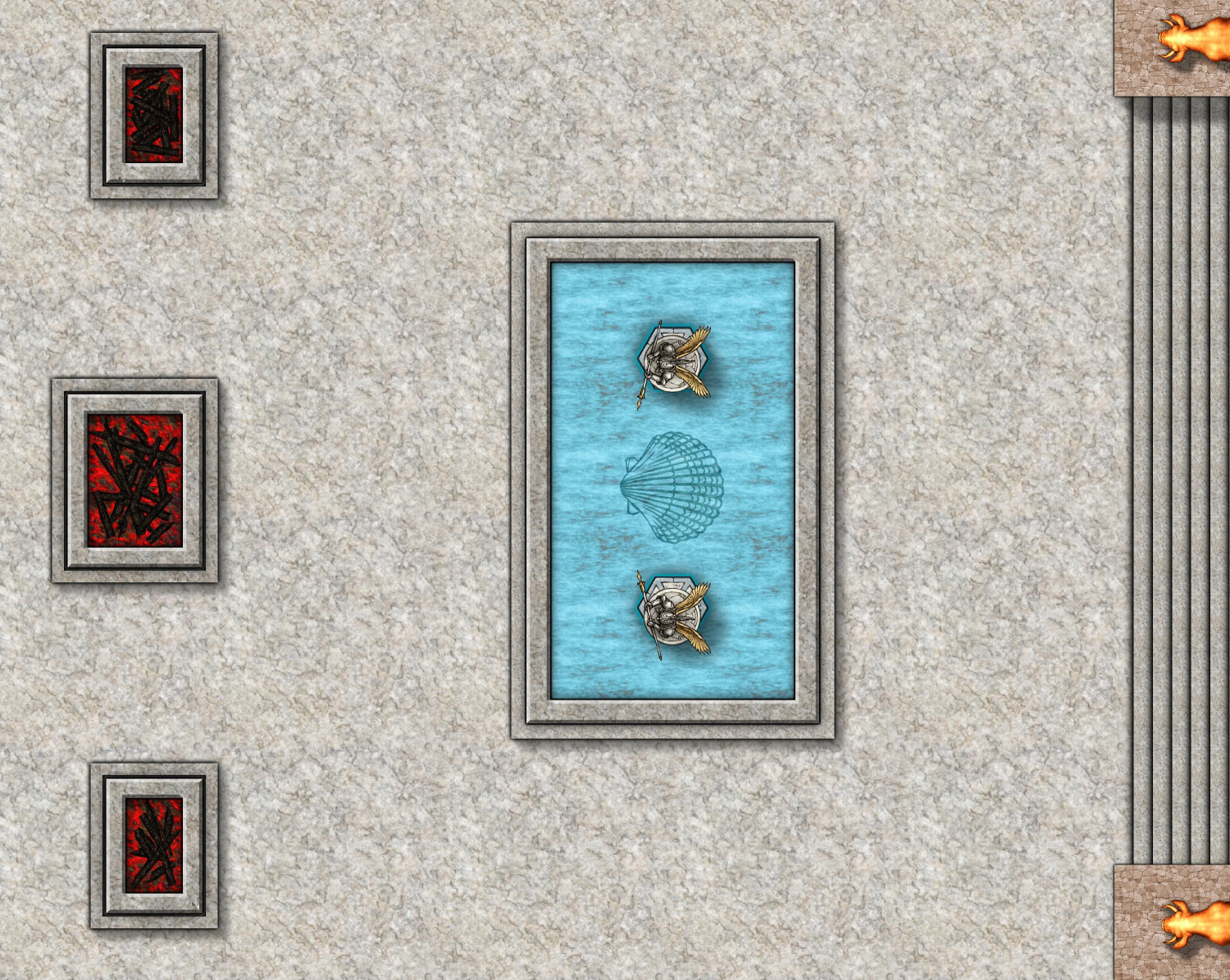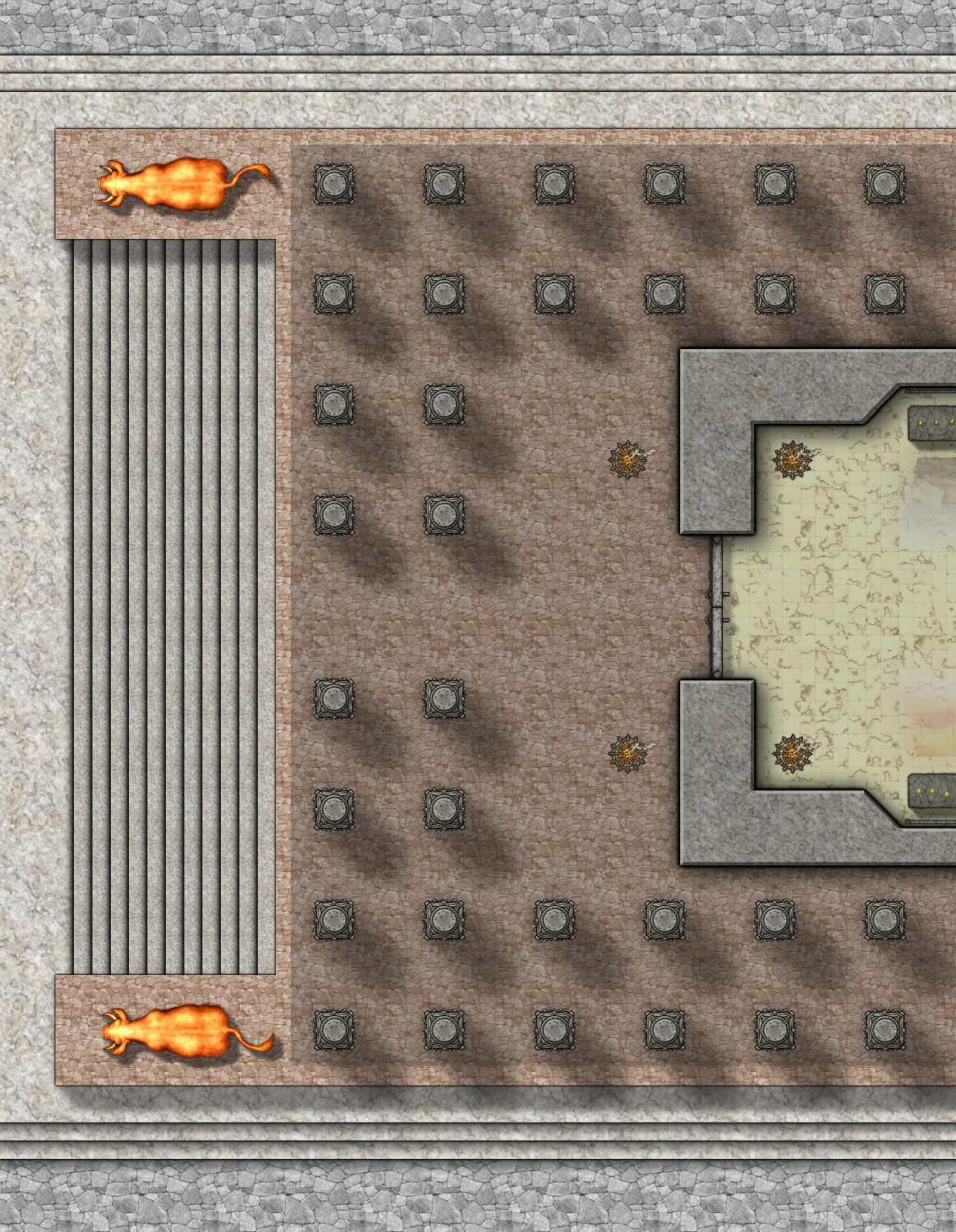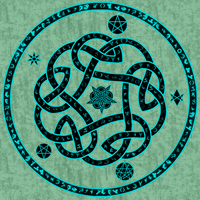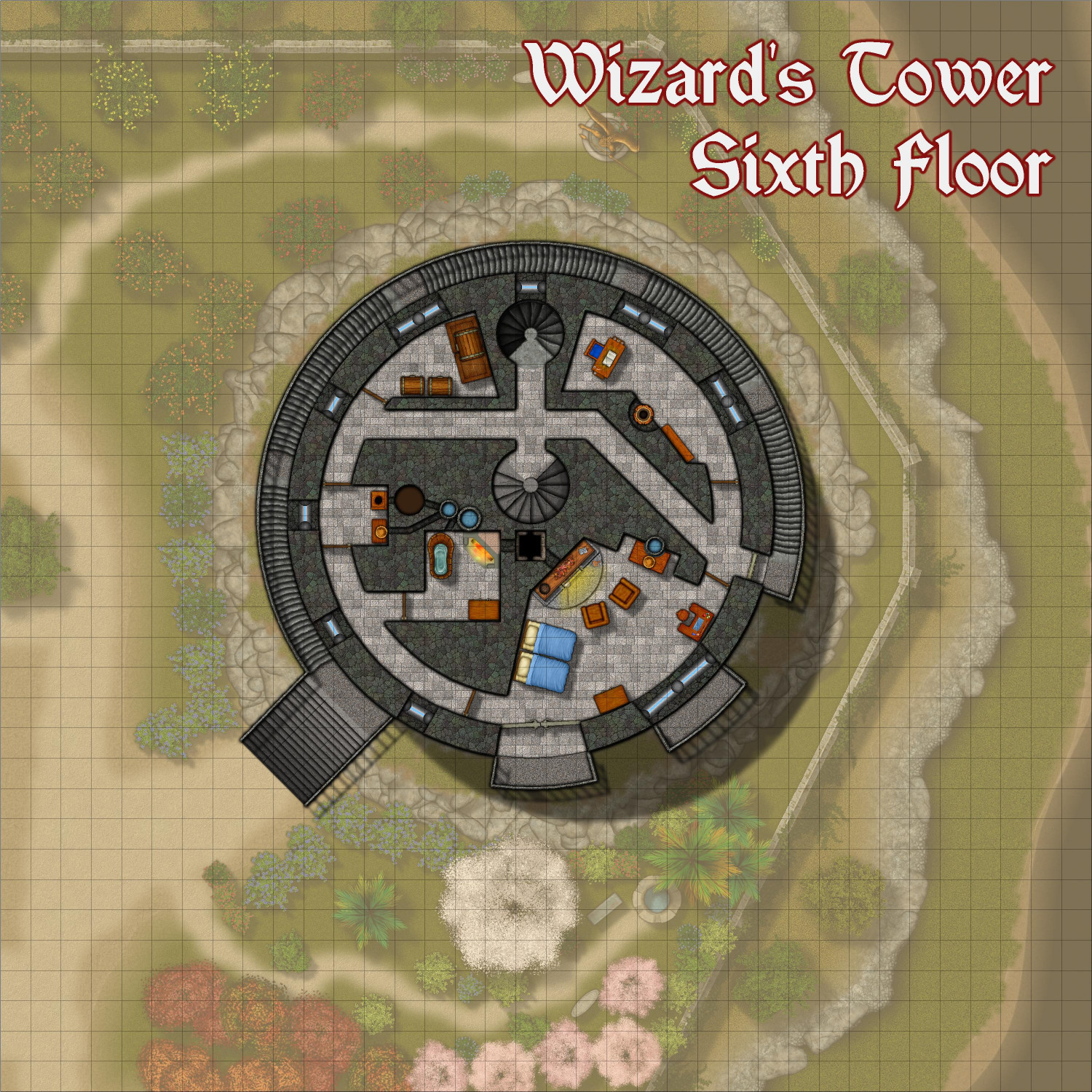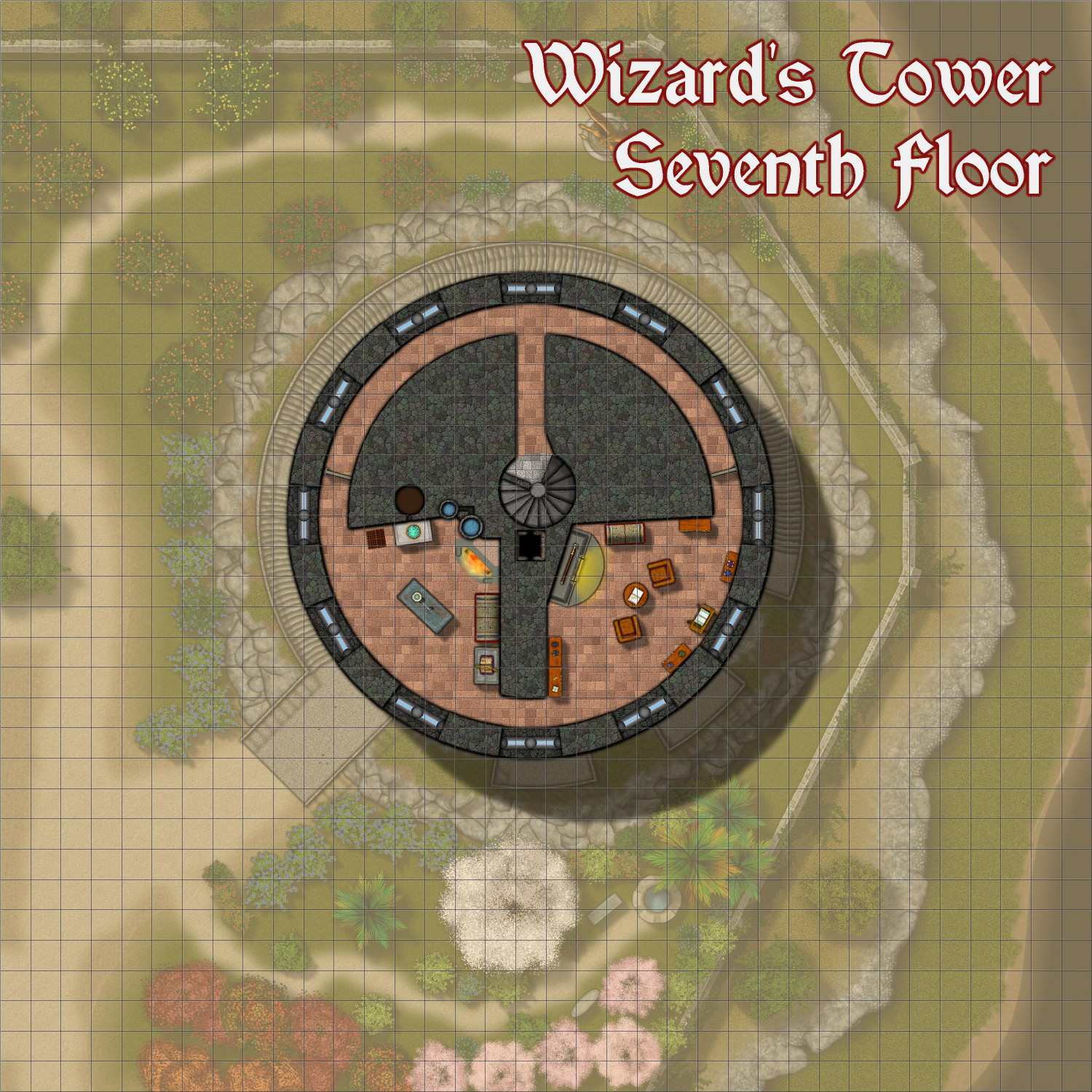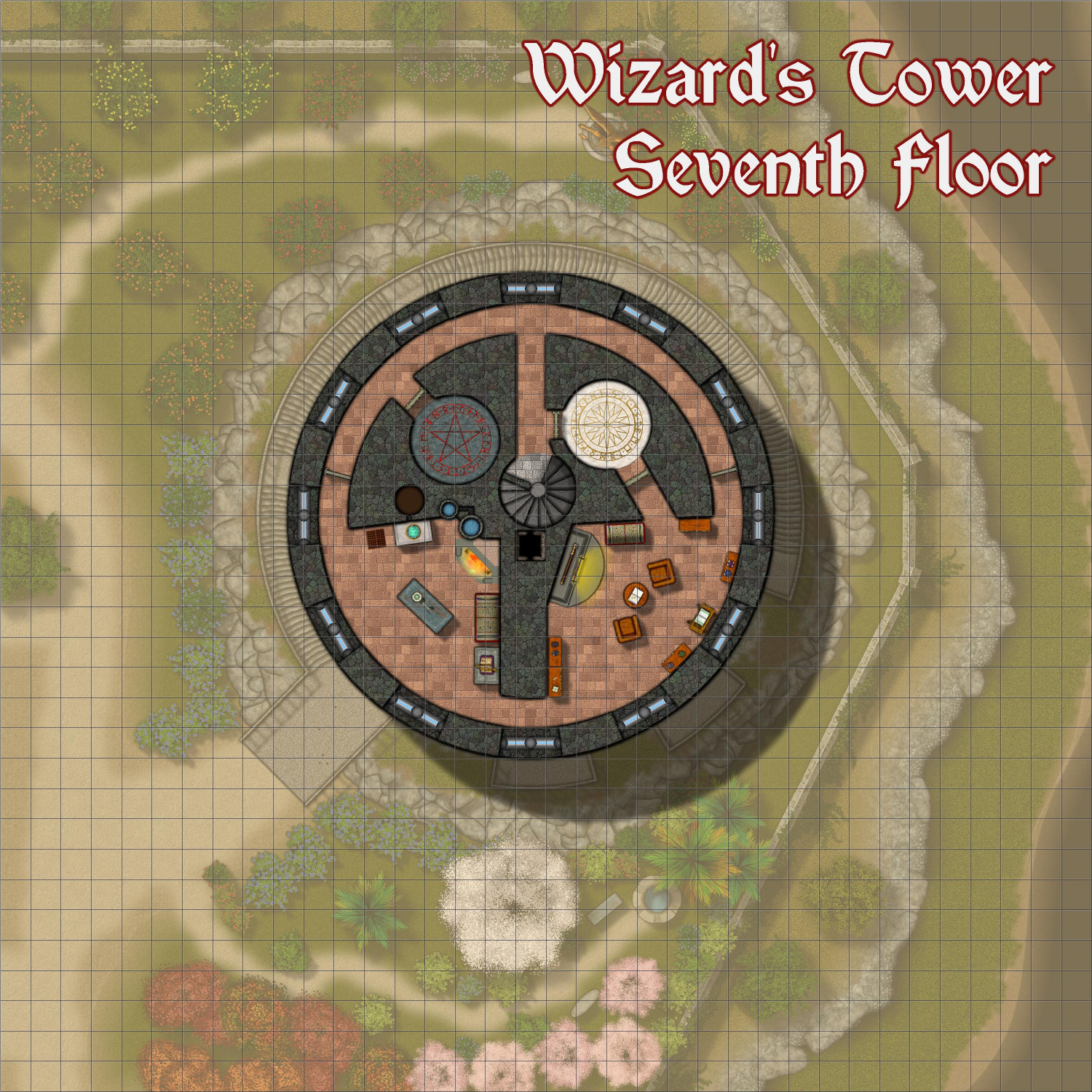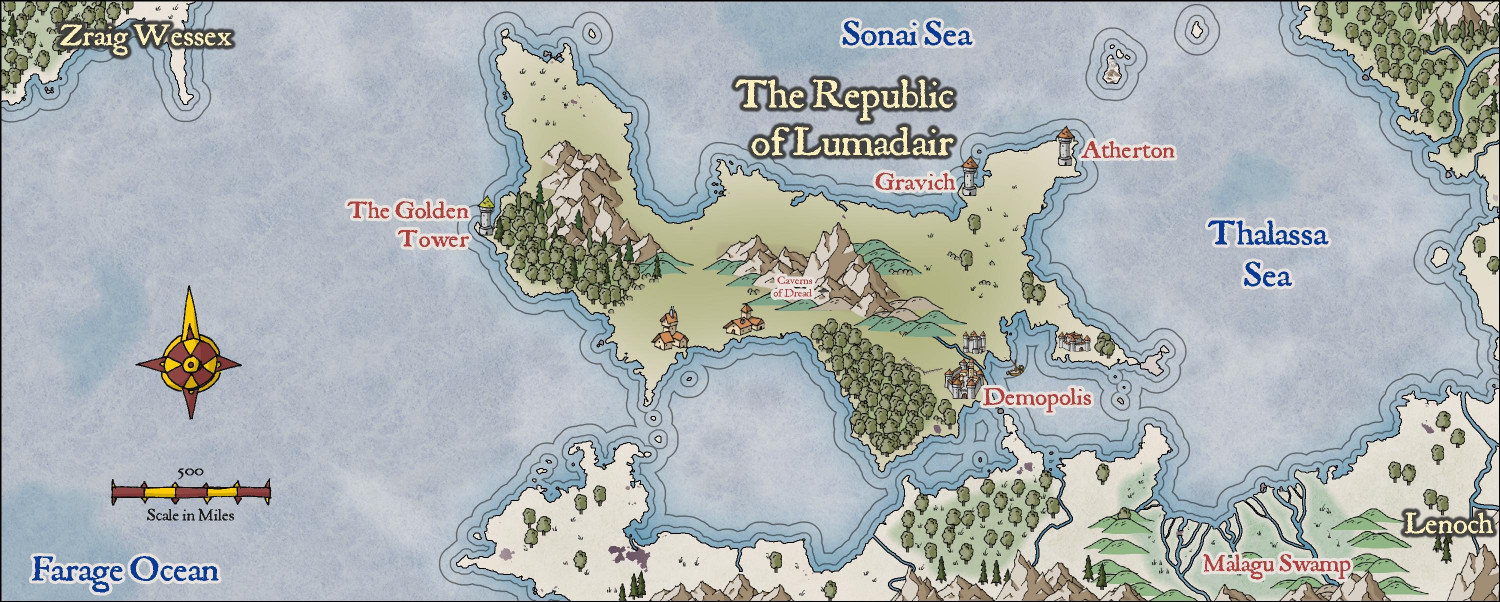Royal Scribe
Royal Scribe
About
- Username
- Royal Scribe
- Joined
- Visits
- 8,800
- Last Active
- Roles
- Member
- Points
- 3,195
- Birthday
- February 5, 1968
- Location
- San Francisco, California
- Real Name
- Kevin
- Rank
- Mapmaker
- Badges
- 16
Reactions
-
[WIP] Adnati - Birdseye Continental
-
[WIP] Haunted Mansion
It's "spooky season," so I had to map something in honor of the season. I have a few other ideas, including a swamp witch's home (we'll see if I can pull off designing a swamp). But first, a haunted mansion on a hill overlooking a church and its appurtenant graveyard.
This is done mostly in Creepy Crypts, with buildings from Darklands City and CD3, and a few things brought in from Forest Trail (mostly the trees and the tower ruins for wells). The stained glass window reflections are from the Mike Schley monthlies. (Why, you may ask, are the reflections outside? The last thing I will do will be to play with the lighting to show that this is at night -- the lights are inside the church, shining out, rather than the other way around.)
Working on the environs first and then with tackle inside. Still have to finish populating the graveyard and
-
[WIP] The Wizard of Schley
I've been using DD3 symbols for interior furnishings lately because they are a better fit as a supplement to dungeon styles like Creepy Crypts. But I just had to play with Mike Schley's latest symbols (especially the astrolabe!), including some like the cliff symbols as well as the Stairs and Steps from last year's annual. I'm calling it this tower the Wizard of Schley...
(However, I just realized that although I have interior stairs going down, I haven't designed the basement yet. I will do that tomorrow.)
From Above
On the roof of his tower, the wizard paint the landscape by day and study the stars at night. He's also planted a little herb garden up here. The stairs to reach the roof are in the western tower; the southeastern tower is a chimney.
First Floor
This floor is principally used to receive guests, especially adventurers seeking to buy potions and scrolls, or to have curses removed, magical items identified, prophesies interpreted, or their destination scried upon to scope it out. He has set it up to impress and intimate guests, with an ornate throne for himself. Most of the magical devices that he might need for the typical visitors are available here.
Second Floor
The second floor is the wizard's main living space, with a kitchen and spacious dining area. The roof of the gatehouse can be accessed from here, and the wizard has set up a table and chairs here for outdoor dining on nice afternoons and evenings.
Third Floor
This is the wizard's bedchamber, bath, and private office. The main interior stairs end here, but a spiral staircase in the western tower continues up.
Fourth Floor
This is the wizard's workshop and summoning chamber. The tower stairs continue from here to the roof.
-
[WIP] Haunted Mansion
Working on the inside of the church first before tackling the mansion, though I've been taking notes on the types of rooms one might expect in a medieval mansion. (Suggestions welcome.) I've just done the first floor so far.
Here's the outside.
The end portions of the right and left wings are actually covered porches, so the floorplan for Floor 1 will show the porches, and Floor 2 will show the roofs covering the porches.
Here's the inside. I used the parchment approach that Sue used with the Beaumaris Castle annual to cause the outside to fade out a bit. The four stairwells all go up and down.
Downstairs, the basement is mostly below ground, but a small portion is above ground, just enough for some high windows to let in daylight. The priests' offices are down there along other rooms. There might be some common rooms for church events (what's the medieval equivalent of Bingo?), but most of that sort of thing probably occurs at the Church Hall on the west side of the plaza. This level will include a room used to prepare bodies for funeral services. Another basement below that will contain catacomb crypts for VIP decedents buried beneath the church rather than in the graveyard beside it. The crypts will have a secret access to the sewers, which also connects to the sewers from the haunted mansion, allowing for secret travel between the church and the mansion (a plot point I'll share when all of the mapping is done.) The second floor will contain balconies. One will in the back between the belltowers, with more pews. The two sets of stairs on the north side of the church will lead to balconies on the east and west sides used primarily by the choir, although they can also accommodate more private seating for visiting nobles.
Here's a blow up of the altar area. The north side is raised a few steps up.
-
[WIP] Villa Citri (Roman-style villa)
Okay, the second floor is mapped and furnished!
Outside
- Muri Magni: Inside the second floor of the outer wall in a 10-foot-wide passageway with arrow slits at regular intervals.
- Portae Turres: The gatehouse towers
- Turres Anguli: The corner towers
- Scalae: Exterior staircases open on one side that lead to the second-floor entrances of the corner towers
Villa
5. Portico Roof: The roof of the covered porch
6. Scalae Graecae: Staircase from the first floor
7. Scala Spiralis: Spiral stairs leading to the third floor
8. Cenaculum: The dining room on an upper floor of Roman houses
9. Heating Caliduct: Hot air from the hypocaust in the basement of the balneae flows through this shaft to heat the floors
10. Puteus & Puteal: An interior well with unheated water
11. Lavatrina: Lavatories
12. Cubiculum: Bedroom
Balneae
13. Colonnade Roof: The roof of the colonnade that connects the main villa to the bathhouse
14. Scalae Graecae: Staircase from the first floor and up to the third floor
15. Hypocaust Chimney: Exhaust vent for the vast amounts of smoke generated by the hypocaust in the basement
16. Armorium: Closets
17. Bibliotheca: The library, including a reading area overlooking the tepidarium pool
18. Palaestra: An exercise area and prominade
19. Gymnasium: Exercise equipment
-
[WIP] Tyr Alomere Township
-
[WIP] Greco-Roman Temple revisited: Dungeons of Schley style
I have a habit of showing my work-in-progress and then forgetting to post the final. So here it is with two different roof styles. (For comparison, you can see the version done in the Marine Dungeons style in my gallery.)
Oh, and here's the FCW if anyone is interested in using it.
-
[WIP] Community Atlas: Kumarikandam - SE Tiantang Region
Ricko invited me to design some monasteries in this area. The concept and write-up are entirely from him. The mapping is from me, with extensive feedback and advice from Ricko. Would it be possible to publish it as joint authors? Here is the description, followed by the FCW and a JPG.
Chuan Bei Si – The Monastery of the Drunken Cup
In the shadow of the walls of Tiang Long Du, the capital of the Kingdom, stands the peculiar Chuan Bei Si – Monastery of the Drunken Cup, a place whose fame derives less from its spirituality and more from its supply of spirits. Founded by a renegade monk called the Eternal Drunken Master, the place attracted a coterie of individuals seeking less divine enlightenment and more the bottom of a good cup.
Legend has it that Shui Zui Chang had a divine vision while staring at the bottom of a baijiu barrel: he believed that true wisdom came from fluidity of movement and the ability to remain upright while the world turned – a concept he dubbed the “Drunken Way”. Thus, the monastery became a training ground where drunken monks practice their staggering martial arts, transforming awkward falls into lethal blows and hiccups into battle cries.
The proximity to the capital is convenient: the liquor arrives fresh, and the monks can replenish their supplies quickly. They often make “spiritual pilgrimages” to local taverns, always returning with full barrels and wild stories about how they had “purified the spirit” of some unsuspecting merchant in a game of dice.
Rumors about Chuan Bei Si are as numerous as the legends of Tiang Long Du. Some claim that in battle, the monks can defeat armies simply by staggering through rows of soldiers. Others say that the monastery houses the mythical Infinite Barrel, a relic that never runs dry.
Hedonistic and unpredictable, Chuan Bei Si is an anomaly within the kingdom – a reminder that even in the dark, there is room for a sip (or two) of levity.
-
[WIP] Wizard's Tower - Interior
Here are the final two above-ground floors of the main tower, though the central turret still needs to be mapped, and then the basement (and dungeons...gotta have dungeons!).
Sixth Floor
This is the wizard's personal suite. The spacious bedroom has a fireplace, a wide double windows, and a private balcony overlooking the garden. It also has direct access to a WC and bathing chamber. There are two other smaller rooms on this level, too. In the past, some wizards have used these rooms as bedrooms for their children. The current occupant's children are grown and have moved out. Their spouse uses one as an office for managing the family's personal and business accounts. The second is currently used for storage.
The spiral staircase on the north wall ends at this level. Another spiral staircase more to the center ascends from here through the seventh floor and into the turret.
Seventh Floor
The seventh floor, the final floor before reaching the turret and the roof, is reached through the central spiral staircase that continues up. This floor is where the magic happens...literally! The southeast room is the wizard's library, complete with a fireplace (with a staff displayed on top of it, numerous bookcases and scroll cases, and an ornate chest engraved with runes. The southwest room is the wizard's workshop, with another fireplace for heating water and all sorts of mysterious apparatuses and objects.
It doesn't take an 18 Intelligence or Wisdom (Perception) to notice that about half of this floor appears to be solid stone. Visitors who find the secret doors may discover two more hidden rooms. The circular room on the northeast side is a Teleportation Circle, with hidden passageways connecting it to both the central staircase as well as direct access to the wizard's library. The circular room on the northwest side is a summoning circle.
More to come!
-
[WIP] Lumadair - Hand-Drawn Fantasy (CA221)
Can confirm that all four of the Forest tools now work properly. It was easier to delete the mysterious lines than to redraw the forests, but at least future maps won't have that issue.
When I brought the land over from the Fractal Terrains export, they were all locked together as a multipoly. I decided to explode them so that I could use the "Change Like Draw Tool" function with the green land for Lumadair and the default brown for the other continents.
Also, the multipoly sea contours from Fractal Terrains have the darker sea as the base with lighter contours on top. When I copied over the sea contours, I just copied a light one and then used the "Change Like Draw Tool" to change it to the lighter contour of the Hand-Drawn Fantasy style, and then manually drew in the darker contours. Not bad for a map that took me less than an hour for the initial map.


